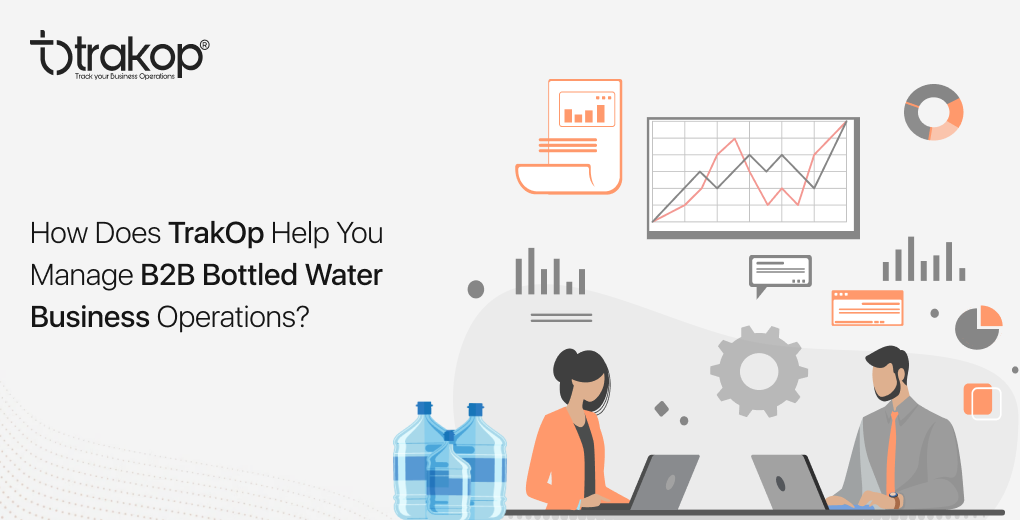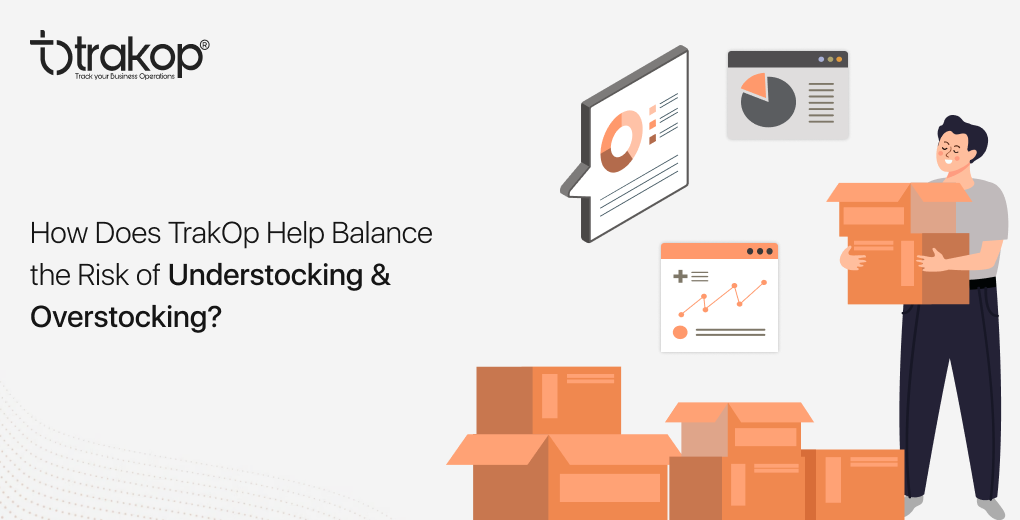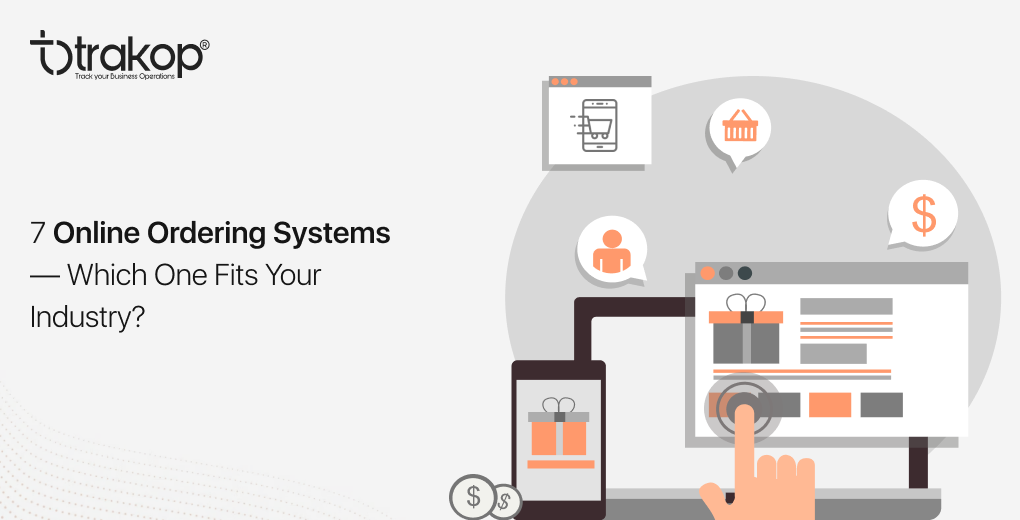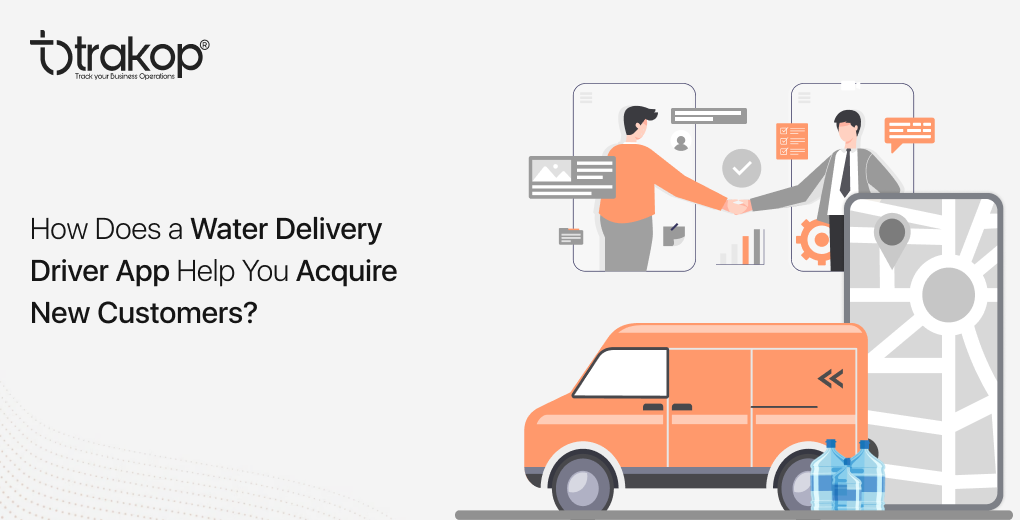Importance of the Sales and Distribution Module in ERP for the Bottled Water Business
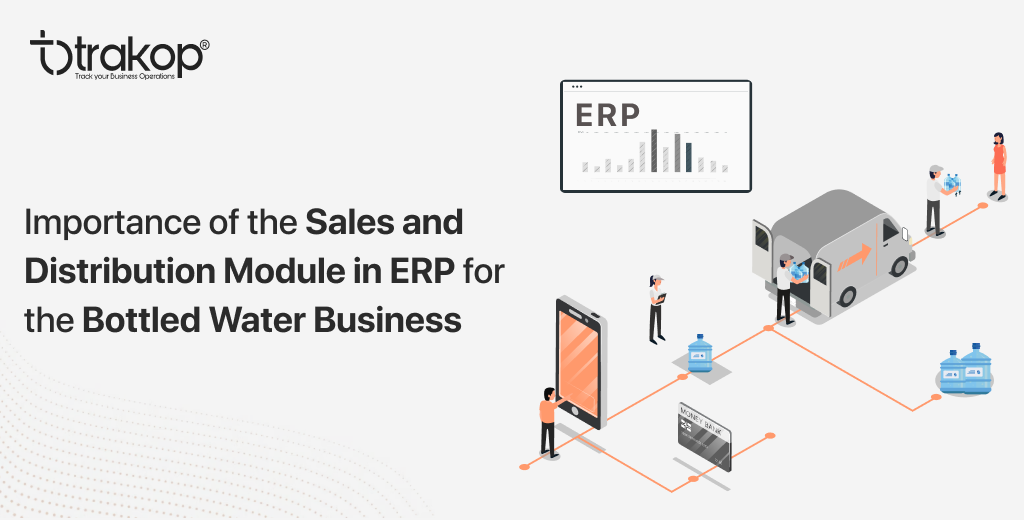
A business’s success depends on delivering the right products, in the right quantity, to the right place, at the right time. The bottled water business is no different. From managing large volumes of recurring orders to coordinating real-time deliveries and ensuring timely invoicing, every aspect of the sales and distribution process needs to run like clockwork.
Manual systems often fall short in handling such complexity, resulting in delays, stockouts, revenue leakage, and poor customer satisfaction. This is where TrakOp’s sales and distribution in ERP for bottled water businesses becomes crucial.
What is the sales and distribution module of an ERP? – The sales and distribution (S&D) module of an ERP is the central nervous system that connects customer orders, inventory, logistics, pricing, and payments into a streamlined, automated workflow. Integrating sales and delivery operations with backend systems empowers businesses to operate more efficiently, make data-driven decisions, and deliver consistent service.
Ways the Sales and Distribution module of an ERP helps the bottled water business
The sales and distribution ERP software is the operational backbone for a bottled water business, linking inventory, delivery, sales, and customer satisfaction. Without this module, businesses risk inefficiencies, missed revenue, and poor customer experience. Ways the S&D module of ERP for bottled water helps businesses
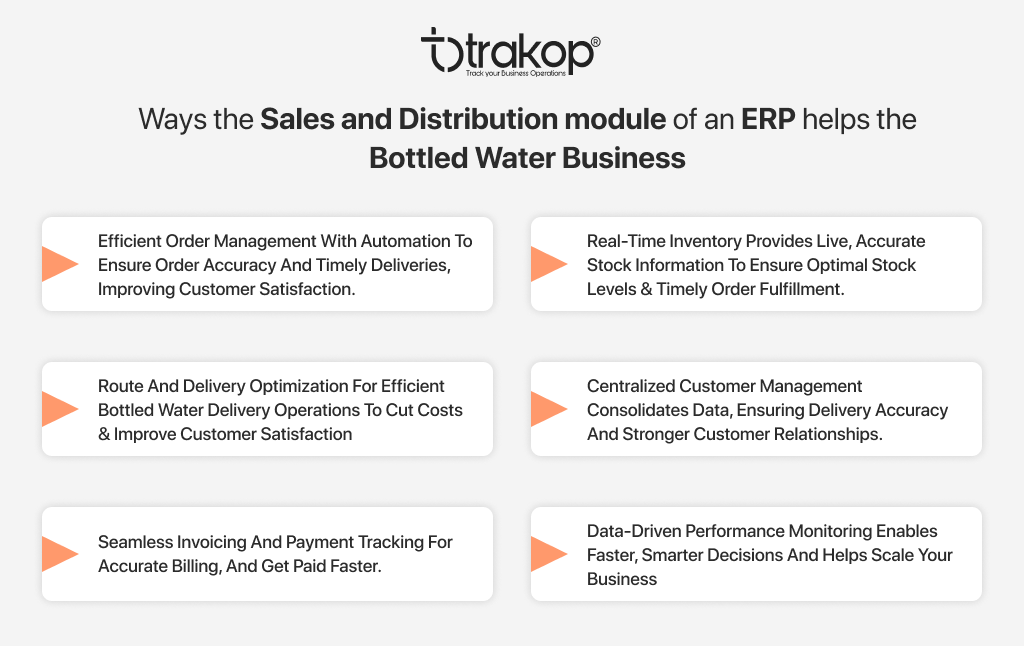
Efficient order management with automation to ensure order accuracy and timely deliveries, improving customer satisfaction.
The bottled water industry caters to a range of customers, including offices, retail stores, institutions, and homes, and often involves recurring deliveries. TrakOp’s bottled water ERP sales and distribution module captures customer orders in real-time from multiple channels, including sales representatives, call centres, and online portals. How does efficient order management ensure seamless order management?
Centralized order capture to ensure no order is missed, and every team member has access to the same, updated order data.
- Orders can be logged by sales representatives, customer service agents, or directly by customers via an online portal or mobile app.
- Recurring orders (weekly, biweekly, alternate, or custom days) can be scheduled.
- Real-time order entry prevents double-booking or miscommunication.
Automated order processing to minimize manual efforts, accelerate order turnaround time, and ensure billing accuracy.
- Auto-generates sales orders, delivery notes, and invoices.
- Integrates with inventory, logistics, and finance modules.
- Applies correct pricing, taxes, and discounts based on customer profile or volume.
Real-time stock validation to ensure that only orders that can be fulfilled are confirmed, reducing cancellations and delays.
- Confirms availability of the required quantity at the nearest warehouse or hub.
- Allocates inventory immediately, reducing the chances of overcommitment.
- Flags indicate low stock levels and plans for restocking.
Integrated delivery planning to reduce missed deliveries, shorten delivery time, and improve driver efficiency.
- Groups orders by location for efficient routing.
- Suggests optimal delivery slots to customers.
- Tracks delivery progress through GPS or mobile apps.
Real-time order status and notification for improved transparency and customer trust.
- Sends automatic updates for “order received,” “out for delivery,” or “delivered.”
- Allows customer service to respond quickly to inquiries or changes.
- Tracks delivery and payment completion in real-time.
Historical data and analytics for better customer service, inventory planning, and business
- Tracks order frequency, product preferences, and seasonal trends.
- Highlights delays, cancellations, or complaints for analysis.
- Identifies high-value customers or regions.
Real-time inventory provides live, accurate stock information to ensure optimal stock levels & timely order fulfillment.
Managing stock is more complex than simply tracking full bottles; you need to account for multiple bottle sizes (20L, 5L, and so on), returns of empty bottles (for reuse/refill), stock across different locations (main warehouse, delivery vans, and depots), and fast-moving orders and unpredictable demand spikes. Without real-time visibility, businesses risk overpromising, under-delivering, overstocking, and missing sales opportunities. How do real-time inventory and stock visibility improve your order-to-delivery process?
Real-time stock tracking across locations to prevent stockouts, double bookings, and delivery delays.
- The ERP system proactively tracks inventory at all storage points, including warehouses, regional distribution centers, on-the-road delivery vehicles, and customer-returned empty bottles.
- Sales reps can see available stock in real-time before confirming orders.
- Inventory is automatically updated when the stock is picked, loaded, delivered, or returned.
- Managers can monitor inventory movement and plan transfers between locations.
Automated inventory allocation for orders ensures dependable order fulfillment and reduces the risk of overpromising.
- Ensures that only available inventory is promised to the customers.
- Prioritize allocation from the closest delivery point to reduce logistics costs and time.
- Flags low inventory levels and triggers replenishment workflows.
Visibility into full and empty bottle cycles prevents losses due to unreturned bottles and improves operational efficiency.
- Tracks the quantity of bottles dispatched vs. returned.
- Associate bottle returns with specific customers for accountability.
- Helps optimize cleaning/refilling schedules based on bottle return flow.
Integration with sales and delivery operations maintains up-to-date, accurate stock figures and prevents manual errors.
- When a sales order is created, the system immediately reflects the updated stock level.
- Delivery teams know exactly what quantity to pick, pack, and dispatch.
- Any stock discrepancies during delivery (e.g., damaged or rejected items) are updated instantly.
Demand planning and replenishment help balance inventory holding costs with customer demand, avoiding stock storage and excess.
- Tracks fast-moving SKUs and seasonal trends (e.g., increased demand in summer).
- Automatically generates reorder alerts based on minimum stock levels.
- Allows real-time visibility into bound stock (from supplier or production units)
Inventory reports and analytics support data-driven inventory control, reducing carrying costs.
- View current stock by SKU, batch, and location.
- Monitor slow-moving or obsolete stock.
- Analyze shrinkage, damage, or wastage.
Route and delivery optimization for efficient bottled water delivery operations to cut costs & improve customer satisfaction.
Timely and cost-effective delivery is critical, whether you are delivering to office complexes, retail outlets, or residential customers. Poor delivery planning leads to late deliveries, wasted fuel, underutilized resources, and lower customer satisfaction. How does route optimization enable seamless order fulfillment?
Automated route planning to reduce travel time and distance, allowing more deliveries per trip and lowering fuel costs.
- Clusters delivery addresses based on geographic zones.
- Uses real-time traffic and distance data (if integrated with GPS or mapping APIs).
- Creates optimized routes based on delivery priority, time windows, and vehicle capacity.
Delivery slot scheduling improves one-time delivery performance and customer satisfaction.
- Allows customers to select or confirm delivery time slots.
- Automatically assigns delivery schedules based on customer preference and availability.
- Flags scheduling conflict to avoid double bookings.
Load optimization and vehicle allocation to increase delivery capacity without increasing fleet size.
- Assigns orders to delivery vehicles based on volume, weight, and container types.
- Ensures each truck is optimally loaded to optimize space utilization.
- Helps prevent overloading and underutilization.
Real-time delivery tracking helps boost transparency, reduce complaints, and help measure delivery performance.
- Updates customers and dispatch teams with estimated arrival times.
- Flags delays or missed deliveries for immediate actions.
- Records delivery proof (e.g., digital signatures or timestamps)
Integration with sales and inventory data prevents delivery failures due to stock issues and ensures smooth handovers.
- Only assigns orders that have confirmed stock availability.
- Adjusts routes dynamically if orders are canceled or modified.
- Updates inventory in real-time once delivery is completed.
The costs and performance analysis enable continuous improvement of logistics strategy and cost reduction.
- Measures KPIs like fuel usage, delivery time per order, on-time delivery rate, and vehicle utilization.
- Identifies underperformance routes or overloaded regions.
- Suggest improvements based on historical data.
Centralized customer management consolidates data, ensuring delivery accuracy and stronger customer relationships.
Maintaining accurate customer records, preferences, delivery schedules, payment histories, and special pricing is essential. Customers often have unique needs such as recurring delivery days, bottle quantities, credit terms, or preferred time slots. Handling all this manually or across disconnected systems can lead to service errors, missed deliveries, delayed payments, and lost business. The centralised TrakOp’s ERP system provides a single source of truth for all customer-related information, thereby improving service quality, streamlining operations, and supporting long-term customer relationships. How does centralized customer management help you improve customer relationships?
A unified customer database ensures that everyone in the organization works with consistent, up-to-date customer data, avoiding duplication & miscommunication.
- Stores customer details like name, address, contact information, GST number, customer type (B2B/B2C), and region.
- Maintains delivery instructions, time preference, and order frequency.
- Logs all past orders, returns, complaints, and payments.
Customized service and delivery schedules increase reliability and customer satisfaction.
- Stores’ preferred delivery days and times are based on the customer.
- Automates delivery planning around customer-specific schedules.
- Manages customer-specific order patterns (e.g., 20 bottles every Monday and Thursday)
Credit management and payment tracking to reduce payment delays, improve cash flow, and manage credit risk
- Assigns credit limits and payment terms to each customer.
- Overdue invoices and exceeded limits are automatically flagged.
- Tracks payment history and aging reports.
Customer-specific pricing and discounts ensure accurate billing and build trust by consistently honoring negotiated rates.
- Applies customer-specific rates, volume-based discounts, or contract pricing.
- Automatically calculates the correct price during order entry and billing.
- Supports seasonal offers or promotional schemes based on the customer.
Complaint and service issue tracking to enhance customer experience and help identify recurring service problems for improvement.
- Logs complaints related to delivery, product quality, billing, or service.
- Assigns issues to the appropriate team with resolution tracking.
- Maintains a history of past issues and how they were resolved.
Customer performance analysis supports data-driven sales strategies and personalized marketing efforts.
- Tracks order frequency, revenue contribution, and payment habits of your customers.
- Flags inactive or declining customers.
- Identifies high-value or long-term clients for loyalty programs.
Seamless invoicing and payment tracking for accurate billing, and get paid faster.
The ability to generate timely invoices and track payments efficiently is crucial for maintaining healthy cash flow and building trust with customers. Businesses frequently conduct high-frequency transactions (daily or weekly deliveries), accept payments using various methods (cash, credit, and online transfers), have credit-based customers with variable payment cycles, and utilize field-based invoicing and collections. Manual invoicing or disconnected systems can lead to delayed billing, missed payments, inconsistent records, and customer disputes. How does invoicing and payment tracking ensure timely payments?
Automated invoice generation for error-free billing and a faster payment cycle.
- Creates invoices immediately after the order is dispatched or after the delivery is confirmed.
- Captures all relevant details, including products, quantity, price, taxes, and discounts.
- Supports both one-time and recurring (subscription-based) billing.
Centralized billing for recurring orders streamlines billing for both the business and the customer.
- Group multiple deliveries into one invoice (e.g., weekly or monthly billing).
- Offers visibility into all deliveries covered under a particular invoice.
- Reduces invoice volume while maintaining detailed tracking.
Real-time payment tracking to reduce revenue leakage, improve collection follow-up, and avoid duplication or misposting
- Records payment collection by drivers, received online, or entered by the accounts team.
- Flags unpaid, partially paid, or overdue invoices.
- Auto-matched payments with corresponding invoices.
Credit limit and payment terms management to control risk, enforce payment discipline, and ensure responsible sales practices.
- Assigns credit limits, due dates, and grace periods per customer.
- Block new orders for customers who have exceeded limits or are overdue for payments.
- Notify the sales and finance team of at-risk accounts.
Multi-channel payment integration to offer payment flexibility to the customers while maintaining financial accuracy and real-time reconciliation.
- Integrates with payment gateways and accounting systems.
- Allows drivers to record payments using mobile apps in the field.
- Reconcile bank statements with system entries.
Financial reporting and collections dashboard to get a complete picture of the business’s monetary health and improve collection strategies.
- Tracks outstanding balance by customer, region, or sales reps.
- Shows aging reports to identify long-pending invoices.
- Help forecast cash inflow and support better financial planning.
Data-driven performance monitoring enables faster, smarter decisions and helps scale your business.
Efficiency, timely deliveries, and customer satisfaction are critical in the bottled water industry, and you must measure them to improve them. Bottled water companies’ ERP systems provide real-time dashboards, analytics, and KPIs, enabling managers to track performance throughout the sales and delivery cycle. How does data-driven performance monitoring help you make faster, smarter decisions?
Real-time sales monitoring to identify growth opportunities, help align marketing efforts, & ensure optimal inventory.
- Monitors daily/weekly/monthly sales trends.
- Compares actual sales vs. targets (per product, rep, and region).
- Highlights best-selling SKUs and underperforming items.
The order fulfillment metrics improve customer satisfaction and reduce service bottlenecks.
- Monitors order processing and delivering efficiency and measures KPIs, including order fulfillment rate, on-time delivery rate, order-to-dispatch cycle time, and delivery accuracy (correct product/quantity/timing)
- Identifies delays in the order-processing pipeline.
- Flags frequent reschedules or failed deliveries.
- Highlights delivery routes or reps needing support.
Customer insights and satisfaction enable targeted upselling, implementation of customer retention strategies, and improved service personalization.
- Tracks order frequency, volume, and average value per customer.
- Monitors churn or drop in order volume.
- Records complaints and service recovery rates.
Inventory turnover and stock movement help optimize procurement and warehousing, minimizing holding costs and wastage.
- Measures stock turnover ratio (how quickly inventory sells).
- Identifies slow-moving or obsolete stock.
- Tracks full vs. empty bottle movement trends.
Payment and credit performance improve financial control, help reduce bad debts, and support better cash flow planning.
- Monitors outstanding payments and average collection period.
- Tracks overdue invoices by customer or invoice.
- Flags credit limit breaches and collection delays.
The sales team and route performance encourage accountability, support performance-based incentives, and optimize field operations.
- Tracks sales rep or delivery route.
- Analyze successful vs. failed deliveries per driver.
- Measures time per delivery and cost per route.
Custom dashboards and alerts enable proactive management rather than reactive firefighting.
- Real-time alerts for low stock levels, missed deliveries, and overdue order payments.
- Executive dashboards with high-level performance summaries.
- Drill-down capability for deeper analysis by date, region, or customer type.
Bottom-line
Effective sales and distribution management is critical to ensuring product availability, customer satisfaction, and long-term profitability. The sales and distribution module of bottled water ERP software can help you streamline order processing, improve inventory visibility, optimize delivery routes, and enable real-time performance tracking. Centralization and automation help businesses to respond quickly to market demands, reduce operational errors, and make data-driven decisions.
TrakOp offers a bottled water ERP that automates and streamlines all processes, including sales management, production, inventory, quality control, distribution, and order fulfillment. If you own a bottled water business and want to enhance your sales and distribution operations, schedule a demo to see how we can help.
Hope You Enjoyed the Read!

He loves to explore. His passion for helping delivery industries in all aspects flows through in the vision he has. In addition to providing smart solution to make delivery process flawless, Ravi also likes to write sometimes to make it easier for people from business industry looking for digital solutions.

